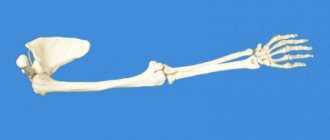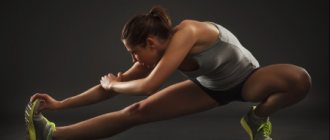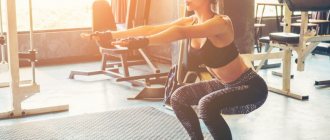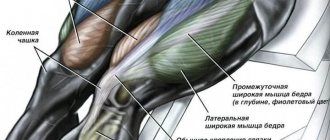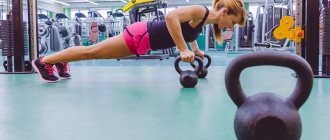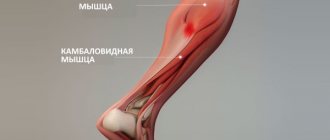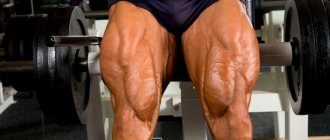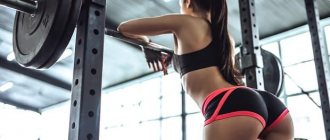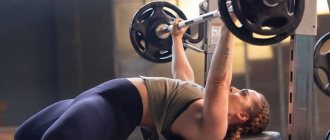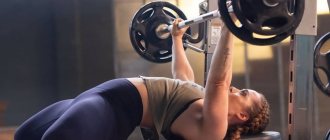Muscle imbalances are quite common in people, even world-class athletes. The muscles on the front of the thigh (quadriceps) are quite often stronger than the muscles on the back of the thigh. And the upper trapezius muscles tend to be stronger than the lower trapezius muscles. The anterior deltoids are stronger than the posterior deltoids. As a rule, they develop the muscles that a person sees and they are located in front. The shoulder is a classic example of a body part that people try to develop first. It's no surprise that 30% of all strength training injuries occur in the shoulder joint.
The shoulder muscles can be divided into two groups:
- Flexors and extensors and these include the deltoid muscle, supraspinatus and infraspinatus muscles, teres minor and major muscles, subscapularis muscle. The deltoid muscle has the most complex and diverse functions. The deltoid muscle consists of three bundles
- The anterior deltoid muscle is located in the front of the shoulder, the lateral deltoid muscle is located in the middle of the shoulder, and the posterior deltoid muscle is located in the back of the shoulder.
Data from a study of bodybuilders showed that the strength of the anterior deltoid muscle could be 5 times greater than that of ordinary people. And the lateral deltoid muscles could be 3 times stronger. At the same time, oddly enough, the rear deltoid muscles were only 15% stronger.
The muscle imbalance between the front and rear deltoids can be partly explained by the emphasis on exercises that target the front deltoids and the lack of exercises that target the rear deltoids.
Coordinated work of the shoulder muscles allows you to perform the necessary movements and maintain stability of the shoulder joint. A disruption in the interaction of the muscles that stabilize the shoulder with the muscles that perform movements is called a muscle imbalance of the shoulder. This disorder creates problems with movement, since the muscles responsible for movement are stronger than the muscles responsible for stability and this leads to instability.
In most cases, muscle imbalance can occur due to repetitive movements. The most common is excessive strengthening of the internal rotator muscles of the shoulder accompanied by poor development of the external rotator muscles. The internal rotator muscles are strengthened with chest exercises and back exercises, but the external rotator muscles are rarely worked. This leads to rotator cuff imbalance and damage to both the rotator cuff muscles and tendons. This imbalance can be corrected with specific exercises to strengthen the external rotation muscles.
Content
- 1 Deltoid muscle, clavicular part 1.1 Beginning
- 1.2 Attachment
- 1.3 Innervation
- 1.4 Training
- 1.5 Features
- 1.6 Shoulder flexion/adduction. Functional muscle tests
- 1.7 Participation in sports
- 2.1 Beginning
- 3.1 Beginning
Characteristic
The deltoid muscle is a section of the superficial musculature of the shoulder that is located on the outer part of the shoulder. The name of these tissues comes from the Greek letter “delta,” which visually resembles the shape of this muscle. The average weight of the deltoid muscle of a healthy person is 192 g.
The muscle originates from the lateral third of the clavicle and passes near the acromion and the spine of the scapula. The deltas are innervated by the axillary peripheral nerve, and blood supply is provided by the posterior artery, which goes around the shoulder. The deltoid muscles attach to the humerus.
Deltoid muscle, acromial part[edit | edit code]
Deltoid muscle, acromial part
Home[edit | edit code]
- Akromion
Attachment[edit | edit code]
- Deltoid tuberosity of the humerus
Innervation[edit | edit code]
- Axillary nerve, C5-C6
Features[edit | edit code]
The acromial part of the deltoid muscle (m. deltoideus) forms the relief of the lateral part of the shoulder girdle. When lifting heavy objects, it holds the head of the humerus in the glenoid cavity of the scapula.
| Functions | Synergists | Antagonists |
| Shoulder abduction (with the arm already abducted) | *M. deitoideus (spinous and clavicular parts with the arm already abducted) *M. infraspinatus (cranial part) *M. biceps brachii (long head) | *M. pectoralis major *M. latissimus dorsi *M. teres major *M. teres minor *M. coracobrachialis *M. biceps brachii (short head) *M. deitoideus (clavicular and spinous parts with the arm already adducted) *M. infraspinatus (caudal part) *M. triceps brachii (long head with arm already abducted) |
Shoulder abduction. Functional muscle tests[edit | edit code]
Issues and comments
- Do not allow the patient to externally rotate the arm, as this will engage the biceps brachii muscle.
- When testing the acromial deltoid, ensure that the patient does not elevate the shoulder or tilt to the opposite side, as this may appear to be shoulder abduction.
- The supraspinatus muscle serves as an assistant to the acromial part of the deltoid muscle.
Participation in sports[edit | edit code]
The acromial part of the deltoid muscle is involved in all sports that require abduction of the upper limb from the starting position (fencing, weightlifting) or holding the shoulder in an abducted position (archery, rifle shooting). This muscle plays an important role in all types of swimming, especially crawl and butterfly. When doing weightlifting, it centers the head of the humerus in the glenoid cavity of the scapula.
| Kind of sport | Movement/hold | Function | Load | Types of abbreviations |
| Fencing | Lunge | Shoulder abduction | Fast, explosive | Dynamic concentric |
| Weightlifting | Thrust phase | Shoulder abduction | Fast, explosive, maximum | Dynamic concentric |
| Handball | Throw | Shoulder stabilization | Fast | Dynamic concentric |
| Thrust phase | Stabilization of the humeral head in the glenoid cavity | Fast | Dynamic concentric | |
| Archery | Bowstring tension and aiming | Stabilization of the upper limb in abduction position | Strength endurance | Static |
| Rifle shooting | Stabilization of the upper limb in the shooting position | Stabilization of the upper limb in abduction position | Strength endurance | Static |
| Swimming | Breaststroke, backstroke - carry phase | Shoulder flexion, shoulder abduction | Strength endurance | Dynamic concentric |
| Swimming crawl or butterfly - carry phase | Shoulder abduction | Strength endurance | Dynamic concentric |
Week schedule
The table below shows a weekly training schedule for the balanced development of all 3 deltoid muscle bundles.
| Day of the week | List of exercises for a specific day of the week |
| Monday | 1. Dumbbell press from a standing position. 2. Barbell press from the upper chest from a standing position. 3. Handstand push-ups upside down. 4. Lifting the body from the floor using your fists. |
| Tuesday | A day of rest and restoration of the muscular system. |
| Wednesday | 1. Pull-ups of dumbbells while lying on an inclined bench. 2. Lifting the barbell to the chin. 3. Raising dumbbells in different directions with their simultaneous rotation. 4. Dumbbell push-ups. |
| Thursday | The day of restoring the deltoid muscles, receiving high-quality and balanced nutrition. |
| Friday | 1. Side plank with forearm access. 2. Raising dumbbells in different directions from a sitting position in an inclined position. 3. Reverse butterfly with expander. 4. Bending your arm back. 5. Throwing the barbell in front of you. |
| Saturday | A day of rest and restoration of the muscles of the musculoskeletal system. |
| Sunday | Carrying out cardiological training to prevent cardiovascular diseases that can arise as a result of intense physical activity on the body using sports equipment. Sunday cardio training involves doing the following:
Walking outdoors can also be a great cardio workout option. |
Skipping a workout, drinking alcohol, and smoking do not have a positive effect on the development of deltoids. Excessive physical activity also has a negative effect on the formation of muscle tissue in the shoulder girdle.
Read also[edit | edit code]
- Muscles - anatomy and functions
- Muscles of the shoulder girdle
- Arm muscles
- Shoulders - exercises and training features
- Anatomy of the shoulder joint
- Trapezius muscle
- Levator scapulae muscle
- Rhomboid muscles
- Serratus anterior muscle
- Supraspinatus muscle
- Infraspinatus muscle
- Subscapularis muscle
- Latissimus dorsi muscle
- Teres major muscle
- Teres minor muscle
- Pectoralis major muscle
- Pectoralis minor muscle
- Subclavius muscle
- Coracobrachialis muscle
When to expect the effect
Provided that all exercises aimed at developing the deltoid muscles are correctly performed, adequate nutrition and rest are obtained, the first result of the training will be noticeable no earlier than 30-60 days later. The muscles of the shoulder girdle will become more prominent, the anterior, lateral and posterior delta bundles will increase in volume.
The deltoid muscles are located in the area of the outer contour of the shoulder joint, forming the anterior, lateral and posterior bundle of muscles. This part of the musculoskeletal system is responsible for the mobility of the upper limbs during lifting, as well as abduction back and to the sides. The deltoids are conventionally divided into 3 muscle groups.
Innervation of these tissues of the shoulder is carried out by the axillary nerve. Training the deltoid muscles involves regular exercise using dumbbells, barbells, your own body weight, and an expander for fitness. Girls who don’t miss sports, pump up their deltoids according to a predetermined schedule, get beautiful shoulders after 1-2 months.
How to pump up deltoids in a split
In most cases, deltas are not given enough attention. It can be difficult to dedicate a day exclusively to this muscle group. However, like other important muscle groups - legs, back, chest - the deltoids also require separate training.
If you decide to do split training, first familiarize yourself with its concept in order to correctly select exercises and determine the number of days. If you combine deltoids with other muscles, start training with deltoids. If you think that another muscle group is more important, then start with it.
If you combine pumping up the deltoids with your back, then it is advisable to start with the posterior part of the deltoid muscle (variation: you can start with the middle one). This is justified by the fact that if you hit your shoulders first, you won’t be able to fully load your back.
Train the big muscles first, then the small ones. Below is a four-day split training program for advanced athletes.
Standing barbell press
The standing (or sitting) barbell press is considered a basic exercise for building deltoids, but it is not specified that the bench presses primarily load the anterior deltoids, which in most people is already quite well developed. In addition, the front part of the deltas is actively involved in bench presses. If you get too involved in bench presses while standing or sitting and ignore lateral extensions, then you won’t see round deltoids.
As an alternative to the barbell, I would recommend standing or seated dumbbell presses Dumbbells allow you to hold your hands in a position that is comfortable for a person, while the dumbbells should move in the plane of the head. All this allows you to load the middle deltoid bundle. With a barbell, you have to squeeze the weight in an arc, as if bending around your head.
As for the posterior deltoid bundles , 2 excellent exercises are often used for their development:
Pathology
Damage
Relatively often D. o. exposed to traumatic injuries. Bruises and hematomas D. o. may be accompanied by deformation of this area, dysfunction of the deltoid muscle and shoulder joint. Treatment of these injuries, if it is not accompanied by damage to bones and ligaments, does not differ from the treatment of bruises and hematomas of other locations (see Hematoma, Bruise).
Open damage
Before. can penetrate into the cavity of the shoulder joint, which significantly complicates the prognosis and requires special treatment methods (see Shoulder joint). Treatment of wounds that do not penetrate the joint does not differ in any particularities (see Wounds, wounds).
To frequent damage to D. o. include rupture of the acromioclavicular joint and fracture of the acromial process of the scapula. These injuries occur when falling on the outer surface of the adducted shoulder or on an outstretched arm. When the acromioclavicular joint ruptures, the integrity of the coracoclavicular (lig. coracoclaviculare) and acromioclavicular (lig. acromioclaviculare) ligaments is disrupted and the acromial end of the clavicle is dislocated or subluxated, as a result of which the end of the clavicle is displaced under the skin. Clinically, sharp local pain in the area of the acromioclavicular joint is determined; upon examination and palpation there is a patol, protrusion of the acromial end of the clavicle, which, when pressed on it, is easily reduced, but moves again when the pressure on it stops (key symptom). At the same time, there is pain when moving the shoulder joint and weakness of the upper limb. With a fracture of the acromion process, there is significant swelling of the soft tissues in the area of the shoulder girdle, pain and limitation of movements in the shoulder joint. First aid consists of fixing the arm with a Deso type bandage (see Desmurgy) or with a scarf. A rupture of the acromioclavicular joint with dislocation of the acromial end of the clavicle requires surgical treatment. A fracture of the acromion process is often treated conservatively - by fixing the upper limb with a Deso-type bandage for up to 4 weeks. followed by exercise therapy and physiotherapy. Fractures of the head and surgical neck of the shoulder are accompanied by deformation and significant swelling of the soft tissues in the area of the shoulder joint. When the shoulder is dislocated, there is a characteristic deformation of the outer contour of the shoulder joint (see Shoulder joint, pathology). In case of fractures of the neck of the shoulder and dislocations of the shoulder at the time of injury or during inept attempts to reposition the fragments or eliminate the dislocation, the axillary nerve (n. axillaris), and sometimes the axillary artery (a. axillaris), can be damaged. Damage to the axillary nerve leads to paresis or paralysis of the deltoid muscle. These injuries are characterized by dysfunction of the shoulder abduction function: shoulder abduction to 90° in these cases is possible only due to movements of the scapula. With persistent paralysis, atrophy of the deltoid muscle occurs over time with the development of a loose joint (see). Treatment of paresis of the deltoid muscle is conservative - physiotherapy, massage, exercise therapy. Persistent paralysis of the deltoid muscle requires surgical treatment - moving the muscles to the place of the deltoid or arthrodesis of the shoulder joint (see Shoulder joint, operations).
Inflammation
Acute and hron, subdeltoid bursitis are relatively common. Acute bursitis often develops as a result of open or closed injury. Its main symptoms are pain and painful swelling in the area of the greater tubercle of the humerus. In the early stages of the disease, rest, UV or UHF irradiation, and antibiotic therapy are indicated. With purulent bursitis, the diagnosis is established on the basis of the appearance of local and general signs of a purulent process and can be confirmed by puncture; surgical treatment is indicated. The main symptom of hron, subdeltoid bursitis is pain and limitation of movements in the shoulder joint. Often, with hron, bursitis, calcification develops in the subdeltoid bursa - bursitis calcarea. For chronic, bursitis, conservative treatment is indicated: physiotherapeutic procedures, puncture of the synovial bursa with the introduction of a hydrocortisone suspension into it, and only if these methods are unsuccessful - surgical treatment - excision of the synovial bursa (see Bursitis, Synovectomy).
Hron, inflammation of the subdeltoid or subtendinous bursae is one of the common causes of the development of glenohumeral periarthritis (see).
With trauma to the D. o., purulent subdeltoid bursitis, osteomyelitis of the upper metaphysis of the humerus, phlegmon of the subdeltoid space may develop. Its main symptoms are changes in the configuration of the D. o., pain, fluctuation, most often determined by the anterior or posterior edge of the deltoid muscle. Pus from the subdeltoid space can spread to the axillary fossa, to the posterior surface of the shoulder, to the supra- or infraspinatus fossa of the scapula, and to the subpectoral space. The final diagnosis of phlegmon of the subdeltoid space is usually established by puncture. Surgical treatment: wide opening of the phlegmon, performed along the anterior, less often along the posterior edge of the deltoid muscle, and sufficient drainage of the subdeltoid space. Through D. o. surgical approaches are made to the shoulder joint and periarticular tissues (see Shoulder joint, operations).
Bibliography:
Voino-Yasenetsky B.F. Essays on purulent surgery, p. 171, L., 1956; Kovanov V.V. and Anikina T.I. Surgical anatomy of human fascia and cellular spaces, p. 100, M., 1967; Kovanov V.V. and Travin A.A. Surgical anatomy of the upper extremities, p. 261, M., 1965; Multi-volume guide to orthopedics and traumatology, ed. N. P. Novachenko, vol. 3, p. 402, M., 1968; Chaklin V.D. Orthopedics, book. 2, p. 527, M., 1957; Traumatic nerve lesions of the upper limb, ed. by J. Michon a. E. Mobery, Edinburgh - L., 1975. Yu. M. Lopukhin;
S. S. Mikhailov, A. N. Maksimenkov (an.).
Sets and reps for pumping up delts
What volume of sets and reps do deltoids respond best to? The deltoids are a small muscle group, so there is no need for a large number of sets. The average option is suitable.
Optimally – 10 approaches per workout. It's not too much and eliminates the risk of overtraining, but you can still lift enough weight and maintain the intensity.
In addition, you will be able to recover better. Since the deltoids are small muscles, they get tired faster. Not many people can do 20 sets of delts without overtraining.
If you are weak in training, perform basic exercises at least 8 repetitions per set to stimulate muscle growth. The exception is isolating exercises, for example, swings - 10-12 repetitions will be optimal for them.
Rowing the barbell in front of you to the chin
The second exercise that builds the width of the deltas is the row of a barbell in front of you to the chin. To shift the emphasis to the deltoids, you need to grab the barbell with a wide grip and pull it up to chest level, no higher . As in flyes, the movements are determined by the elbows, they move upward, and the hands should be below the elbows. It is not necessary to lift the barbell high; it is enough for your elbows to reach shoulder level, and the barbell will be in line with your chest.
However, this exercise may cause wrist discomfort for some people. The EZ-bar will help take the load off your hands; you should take them on curves.
